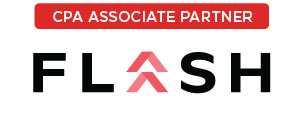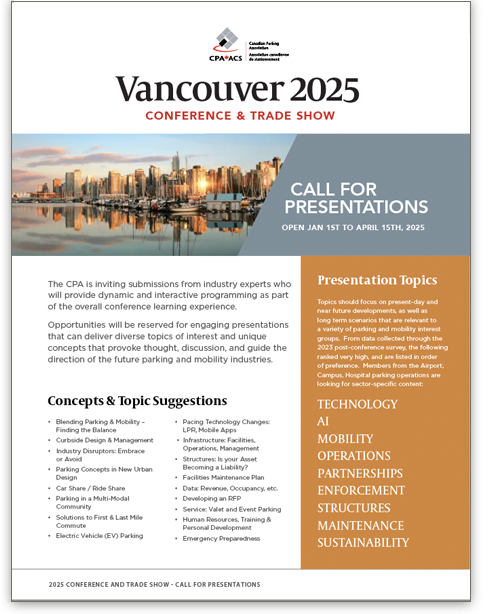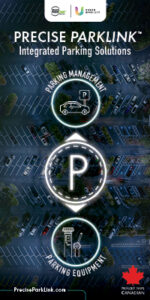Parking Excellence Recognized in Canada (PERC), later updated to the Parking Facility Standards Award program (PFSA) was the first parking facility evaluation program of its kind, and saw many Canadian parking organizations achieve success through participation in the program.
Derived from these past award programs, a standard checklist of items required to meet acceptable, minimum standards for a parking facility has been further amended and endorsed by the Canadian Parking Association as the benchmark for measuring a facility against national standards.
The objective of sharing this check list is to provide the tools necessary for operators to self-check their parking facilities against minimum requirements to manage and maintain a quality parking operation that sets it above others, and helps to improve the image of the industry. The standards cover a variety of facility types, from gravel lots to state-of-the-art parkades, both old and new.
Through a comprehensive consultative process involving a team of parking professionals representing the municipal, airport, campus, private, and hospital sectors, a set of criteria emerged. The CPA’s Image Committee, comprised of board members from all Canadian sectors, worked in consultation with members from all regions of the country during various stages of development.
Focus groups were conducted in five major cities across Canada: Vancouver, Calgary, Toronto, Montreal and Saint John. More than 300 participants from a range of community sectors were asked to share current and relevant information about their experiences using parking facilities.
Keeping in mind that this study was conducted prior to the technological boom that has evolved and transformed the industry over the past decade, the study’s main focus at the time was on the physical state of the parking facilities and the level of customer service provided to enhance the parking experience. Despite the development and introduction of new technology, maintaining standards in all aspects of…
INTRODUCTION: BUSINESS INTELLIGENCE IN PARKING: THE ART OF TAMING BIG DATA
Every time a car enters a parking facility, it leaves a trail. A data trail that is. A gate goes up to let a car in, a payment is made, a gate goes up again to let it exit, time and date the car entered and exited, how much the driver paid, the method of payment, and so forth were measured.
When the parking serves a huge flow of traffic, as is the case for an airport or a hospital parking lot, this data trail becomes big. How big? As big as “Big Data”, the relatively new term that refers to the gathering and storing of large amounts of information for analysis.
Of the business leaders polled, 85% said they believed big data will dramatically change the way they do business. The statistics support their perception – data volumes are expected to double every 1.2 years. Another fact, businesses using data analytics are five times more likely to make faster decisionsi.
Big data can produce big returns for businesses. Nowadays, Big Data is a “big” deal, the “new oil” of the digital economy. But big data is a challenge, because of the amount and complexity of data being mined, the high speed and complexities of data flows which can be unpredictable, and the fact that data comes from multiple sources, which makes it difficult to link, match, and transform across systems.
Data, on its own, is worthless. Many organizations are hitting stumbling blocks trying to tame it: part of the problem is the fact that the majority of companies spend 80% of their time manually collecting data for analysis, which leads to inaccuracies. Poor data or ‘lack of understanding the data’ are cited as the primary reasons for over budget projects and could cost…
By Bill Smith
We live in a time of great change when it comes to parking. The industry has been revolutionized in recent years by the development of many new technologies that are designed to make parking more customer-friendly, while at the same time benefitting owners and operators by making operations more manageable. These technological advances have transformed the ways owners and operators manage their parking assets, and they’ve even changed the ways drivers approach parking.
Today, we are on the cusp of another technological revolution that will carry extraordinary implications for the parking industry. The age of connected and self-driving vehicles will soon be in full bloom and each will present a host of challenges and opportunities. While these future vehicles may seem like the stuff of science fiction, it won’t be long before each plays an important role in our transportation system.
Getting Connected
The connected vehicle is already well on its way to becoming a reality. In just a few years all new cars will have vehicle infrastructure communications and will be connected to the grid. Our vehicles will be able to communicate with traffic technology and recommend which routes to take to avoid congestion and reach our destinations more quickly. They will also take us right to available parking spaces and automatically pay for the exact amount of time we need to park.
According to Nigel Bullers, CEO of EasyPark in Vancouver, the primary challenge for operators and municipal parking managers is forecasting what future connected cars will be able to do. He says that, ultimately, there will need to be a meeting of the minds between what auto manufacturers think their smart cars should do and what consumers actually want.
“It’s not as easy as it may seem to predict what features will be present and how operators and municipalities…
NEW GLASGOW, NOVA SCOTIA–(Marketwired – Aug. 15, 2016) – J.J. MacKay Canada Limited (MacKay Meters), a recognized world leader in the manufacturing and development of parking control products, continues to strengthen its Intellectual Property portfolio with the issuance of U.S. Patent Number 9,406,056 titled “Parking Meter with Contactless Payment”, on August 2, 2016.
This new US patent relates to parking meters and in particular, to parking meters having contactless payment options and follows closely behind two Canadian patents (CA 2,773,250 and CA 2,870,544) issued on June 28, 2016 that also relate to parking meters with contactless payment. The above noted patents represent just a small portion of MacKay’s extensive Patent/IP portfolio which includes utility patents, patent applications, design patents, and industrial design registrations, and trademarks filed in the USA, Canada and internationally.
“The issuance of this latest patent is proof of our continued commitment to providing leading edge technology to our customers and meeting the demands of both the ever-changing payment and parking industries.” said Adrian O’Neil, Chief Technology Officer.
James MacKay, Vice President of Sales, added, “The addition of contactless payment to our parking meters was an easy decision. The payment landscape is moving very quickly towards contactless payments, especially for small value transactions, and MacKay Meters is excited to be able to offer this payment option.”
About MacKay Meters
For more than fifty years, and with over 500,000 meters sold, MacKay Meters has provided customers worldwide with innovative parking systems including quality single and multi-space parking meters. Parking meters manufactured by MacKay are among the most technologically advanced in the world. MacKay was the first parking meter manufacturer to produce a fully electronic parking meter in 1988, the first to achieve ISO Certification 9001: 2008 in 1993, FCC Certification in 2011 and the first to achieve EMV L1 in 2012.
For more information on…
SAN FRANCISCO, CA –(Marketwired – July 20, 2016) – Smarking, the parking industry’s leading provider of data analytics and yield management software, is expanding into Canada through a new partnership with EasyPark, British Columbia’s preeminent parking services provider. EasyPark plans to leverage the power of Smarking’s cutting edge data analytics platform to streamline its operations and integrate the firm’s parking data into a single, easy to use, mobile friendly platform.
“EasyPark is dedicated to staying ahead of the industry curve in adopting and adapting new technology,” said Nigel Bullers, CEO of EasyPark. “We do this to ensure that our customers have the best service possible while we operate at the highest level of efficiency. We saw Smarking’s mobile friendly dashboard at the International Parking Institute (IPI) Conference and Expo in May, and immediately recognized that this tool would enable the EasyPark team in the field, assisting our customers, all while staying on top of lot occupancies and revenues across our portfolio.”
“In the parking industry, there is currently an emphasis on getting ‘big data’ for parking operations,” says Gary Khor, Director of IT at EasyPark. “Obviously data is really important, but more important is being able to see that data in real time, where you need it: in the field and on mobile platforms so that we can be proactive about the parking experience, rather than reactive after the fact. Working with Smarking it quickly became clear that they had the next evolution of data management that we have been looking for to take parking management to the next level.”
The Smarking Management System enables parking asset managers to monitor and optimize their locations using real time and predicted parking data. The dashboard, which was recently optimized for a mobile viewing experience, calculates a number of key performance indicators including: real time…
By Renee Smith
Data breaches are a constant worry for any business that accepts credit card payments. Over the past decade breaches have become increasingly common, and some of the world’s best known companies, including Home Depot, Target, and TJX, have been the targets of sophisticated attacks through which millions of customers have had their personal and credit data compromised. The sad reality of modern life is that any type of personal or financial data that is obtained electronically and transmitted or stored online is potentially at risk.
The parking industry is not immune to this risk. In fact, now that credit card payment is the dominant and preferred form of payment at most parking facilities, parking owners and operators—both public and private—must be particularly vigilant about protecting customers’ financial data.
The credit card industry, through the Payment Card Industry Security Standards Council (PCI SSC), established a framework to help merchants (including parking owners and operators) protect data. The Council has established the Payment Card Industry Data Security Standard (PCI DSS), which is a set of requirements designed to assure that all companies that process, store, or transmit credit card information maintain a secure environment.
On April 28, 2016 PCI SSC released PCI DSS version 3.2, which replaces version 3.1, to address a growing number of threats to customer payment information. This version becomes effective on February 1, 2018. On May 27, 2016, PCI SSC released PA DSS version 3.2, which becomes effective on June 1, 2016. Until their respective effective dates, parking owners and operators should look to these standards as best practices that can help protect their organizations and their patrons.
What do the newest details of PCI DSS v 3.2 adherence entail? Organizations are subject to two significant new requirements. First, they will need to implement a change control process. Second,…
By Bill Smith
The parking industry is in the midst of what may be its most exciting era. We have seen a lot of change over the past fifty-plus years, including major advances in parking design, planning, and management. These innovations have transformed our communities and improved the quality of life immeasurably. But no period in the parking industry’s history has seen so much exciting change.
What’s so exciting? The technology age that is so important to our everyday lives is transforming parking. New technologies are constantly being introduced to the marketplace, from pay-by-phone technology to online reservation services to innovative facility management packages, just to name a few. Each offers to make parking more customer-friendly, efficient, manageable, or profitable.
But perhaps the most important technologies revolve around parking guidance. Parking guidance tools use sensors to record whether a particular space is occupied. This information is then transmitted to LED signs that guide drivers directly to available spaces. Sensor-based systems also typically have the ability to compile occupancy data to allow parking owners and operators to manage their parking assets more efficiently and profitably.
Clear Benefits
“Guidance systems move motorists into parking spaces quickly and reduce congestion throughout a facility,” according to Shareena Sandbrook, managing director from FrogParking Ltd. “This has benefits for customers in different ways. For example shopping mall operators need to maximize the time customers are in retail areas to boost revenues. While for airports, the goal is to make parking easy and efficient for people hurrying to catch flights. A guidance system shows them quickly, at a glance, where parking spots are available.”
And that’s also the appeal to parkers. Parking guidance systems eliminate the need for drivers to circle parking decks looking for an open space. As soon as a driver approaches a parking structure with a guidance program, exterior signage…
Integrating digital technologies into dynamic parking management
By Indigo
Introduction: THE NEW MOBILITY
As a symbol of freedom, mobility, and autonomy, the automobile has changed the shape of our cities and suburbs, yet in the past century, it has evolved beyond our expectations.
Cars now come equipped with advanced hardware that can avoid collisions, they can be self-driving, and yet the great paradox is that a typical car spends most of its time immobile. A car is parked on average 95% of the time, when it is not stuck in a traffic jam.
The digital revolution, a major upheaval caused by technological advances, primarily computers and the Internet, has placed us in an era of accelerating change.
In industrialized countries, this change has shaken several sectors of the economy. While cars become sophisticated enough to be self-driving, and as automakers become mobility providers, cities become smarter by using and integrating new technologies to meet the challenges of the modern city: transportation, governance, and citizen services, to name a few.
Traffic congestion ranks high on the list of evils that afflict urban areas. It increases greenhouse gas emissions and is largely responsible for the smog in big cities. The search for available parking is, in part, largely responsible for congestion – 90% of city motorists lose up to 20 minutes a day looking for a parking space, by slowly circulating, or by immobilizing traffic to parallel park.
With the emergence of “smart” parking, solutions such as nested technologies in the roadway and parking areas, and connections to new mobile tools are being put in place.
The technological solutions to make parking more fluid, by eliminating traffic obstacles, and customizing and facilitating the driver’s experience exist.
But the growing digital revolution has seen the emergence of a large number of contenders for the next “unicorn”, technological start-ups that disrupt sectors of the…





